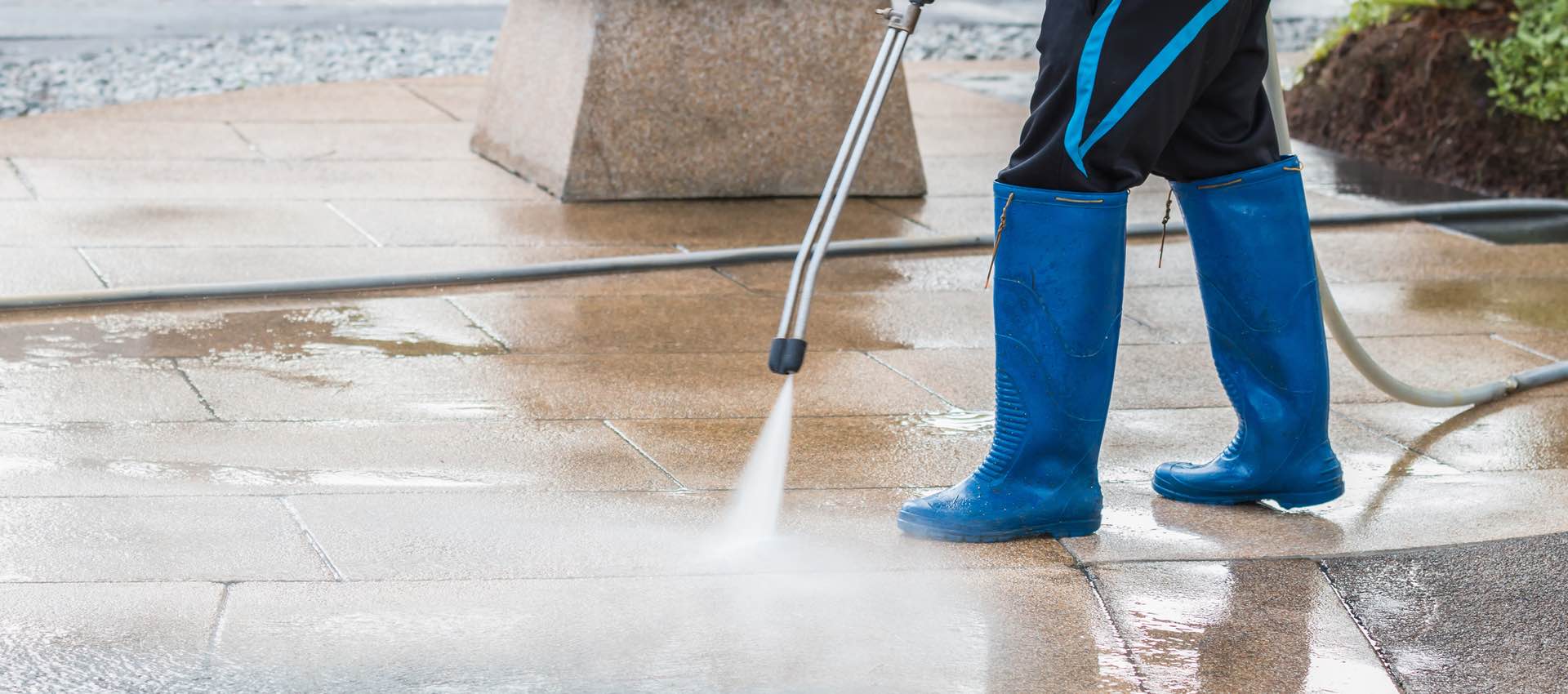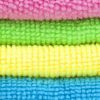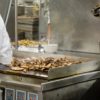Concrete is a highly durable material that can withstand almost any force and lasts for a very long time when well maintained. It’s a material that is no longer used solely for parking lots and sidewalks either as there is a growing trend in decorative concrete. If your concrete surfaces aren’t as fresh as they were after their initial curing, it can lead to a number of issues: grease stains that don’t go away and attract bugs, unpleasant smells and an unprofessional look.
One key thing to understand before you start cleaning is the difference between pressure washers and power washers. Both pressure washers and power washers use strong, direct, pressurized streams of water to clean the desired area, however power washers have an internal heater that makes the stream of water very hot. They both do essentially the same job, but with some materials not being able to handle hot water, it’s important to know the difference and be able to choose the right washer. In addition, power washers are much heavier and expensive because of the additional internal equipment.
Pressure washing concrete isn’t the most stressful thing in the world, but it’s still something to consider very carefully. Pressure washers and power washers can cause harm to any type of concrete if they are not used properly. It can take a bit of time and practice to become skilled at handling pressure washers, so if you are pressure washing a location that needs to be treated with extra caution, such as the area that leads to the front doors of your restaurant, you might want to hire a cleaning company that knows how to properly pressure wash.
Please note that this blogpost is talking about outside, unfinished concrete, not polished concrete. It is possible to power wash stained concrete, but often more gentle methods of cleaning are more desirable to protect the concrete finish. In addition, polished concrete is often used indoors. You don’t want to unleash a pressure or power washer inside!
Concrete Pressure Washing Steps
- Clear the area. If you are pressure washing a parking lot, make sure no cars are within the spray radius. If you are pressure washing close to the restaurant, take care not to hit any landscaping or outside seating by removing furniture and other large objects from the radius.
- Cover plants with tarps or fabric to protect them from chemicals and water blasts. Make sure to cover any electrical outlets as well, and unplug as many electric devices as possible. Cover all wires and cables as well.
- Give the area a sweep to remove any medium sized pieces of debris and/or loose rocks.
- Pretreat your stains, if you have any. You can learn how to treat stains on unpolished concrete from our blogpost “ How To Clean Stained Concrete Flooring.” This is also the time to remove all big areas of grease with TSP or other grease removals, and to remove any chewing gum from the concrete.
- After allowing the pre treaters and grease removal to sit and do their jobs, begin spraying your concrete. Follow the instructions in your washers manual to set up the equipment and detergents properly, then test the pressure washer on a small area first.
- After getting the nozzle adjusted to the power that you want, spray down the whole area at a steady pace with a slight angle to keep the water from directly beating down into an area. You can also use a sweeping attachment here, if you wish.
- After spraying down the whole area, assess the situation. It should look very clean by now, however if you still have some tricky stains you can try more stain removal and washing.
- This step is optional, but if you want to seal your concrete, the time after your concrete is perfectly clean is when to do it.
Pressure washing isn’t scary at all. As long as you research your equipment and protect both yourself and your environment, you have nothing to worry about. Otherwise, contact a professional pressure washing service provider for assistance. Happy washing!




